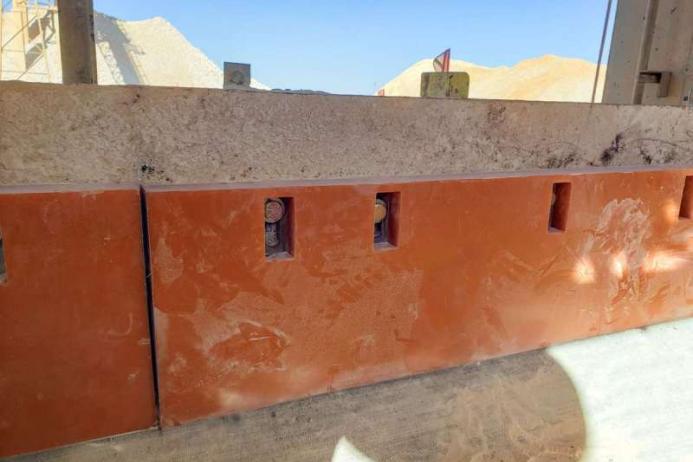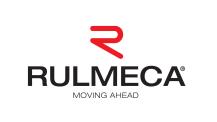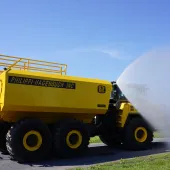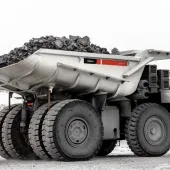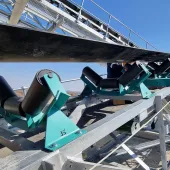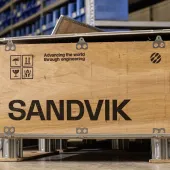Martin Engineering introduce new conveyor wear liner
New Manufactured Canoe Liner engineered to improve chute protection and extend skirt life
MARTIN Engineering say they have introduced a new standard in conveyor wear liner technology with the introduction of their Manufactured Canoe Liner. Made from durable urethane molded around a rugged steel protective plate to absorb impact and abrasion in punishing bulk-handling environments, the design is said to deliver superior shielding of the skirt sealing system and chute wall from heavy, fast-moving cargo. The result is extended equipment life, longer periods of dust and spillage control, improved safety and less maintenance, reducing the overall cost of operation.
‘This is a shift in the engineering and role of wear liners,’ said Dave Mueller, manager of conveyor products for Martin Engineering. ‘Like most conveyor components, the design has evolved into a component that is more effective, safer to maintain and more reliable.’
Previously, most wear liners were sheets of steel welded on to the internal chute wall of the conveyor loading zone. These protected the wall from the punishing effects of splashing, shifting and abrasive material, but since they are wear parts, periodic replacement of these early designs involved enclosed chute entry and hot work using a blow torch, which required certification and supervision, while running the risk of igniting explosive dust.
The steel plates generally did not effectively protect the rubber skirt seal, leading to more frequent skirt replacements. Moreover, the wear liner’s position often left a gap between the liner and the skirting, which captured small lumps of material that could damage the belt. These design issues resulted in excessive downtime, premature equipment replacement and extra labour to monitor and maintain.
The Martin Manufactured Canoe Liner is an engineered urethane strip molded directly around a protective steel plate. This unique approach avoids the bonding issues common to previous designs, preventing urethane separation from the plate that could damage the belt and enclosure.
Each section has a series of 2in (51mm) long bracket holes for vertical adjustment. The bottom ‘belt side’ of the liner is cut to an optional 20, 35-, or 45-degree angle to maximize belt sealing and protect the softer material of the skirt seal from premature wear. Depending on the weight and abrasiveness of the conveyed material, customers can choose a urethane thickness of 1.3–2in (33–51mm).
Delivered in storable cartridges 48in (1,219mm) in length, the units can be cut on site to match the needs of the chute. The cartridges can also be installed vertically on top of one another to accommodate taller chute walls or raised enclosures. Like the lower sections, the upper units can be adjusted too.
As material gradually erodes the Manufactured Canoe Liner, the bottom trough angle continues to protect the skirting. If there are significant gaps between the belt and liner, each individual cartridge can be adjusted by a single technician using a socket wrench. Replacement is easy by simply removing the worn units, mounting each new cartridge, and cutting the end piece to fit. This reduces what used to be a one- or two-day job to one or two hours, say Martin Engineering.
‘Martin are constantly seeking to innovate every aspect of the bulk handling process with the goal of making it safer, more effective and easier to maintain,’ said Mr Mueller. ‘The introduction of the Manufactured Canoe Liner achieves our objectives by improving efficiency and lowering the cost of operation.’

